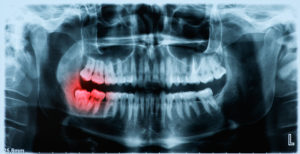 It’s a nice, fall afternoon, and you have plans to enjoy some Nebraska Cornhusker football. Your plans are derailed, though, by an intense pain that shoots through your jaw. You have a toothache, and you need relief fast. Your dentist says you may need a root canal to restore your oral health. Read on to learn how the process works and what symptoms you should be on the lookout for.
It’s a nice, fall afternoon, and you have plans to enjoy some Nebraska Cornhusker football. Your plans are derailed, though, by an intense pain that shoots through your jaw. You have a toothache, and you need relief fast. Your dentist says you may need a root canal to restore your oral health. Read on to learn how the process works and what symptoms you should be on the lookout for.
What is a Root Canal?
A root canal is a basic dental procedure that restores a tooth that is severely damaged from decay or a break. As a general rule of thumb, if bacteria growth has reached the more sensitive inner area where the majority of the nerves and canals are housed, then a dental filling won’t suffice. You’ll need a root canal to repair and restore the tooth.
The Steps of the Procedure
Here are the different parts of a root canal treatment:
- X-Rays Captured – Before any work is done, your dentist will have a series of X-Ray images captured so the infected area can be identified.
- Local Anesthesia Applied – The professional will then apply a topical medication to numb the area where the work will be done.
- Pulpectomy – Your dentist will make an incision in the affected tooth, remove the decayed tissue and clean the area thoroughly.
- Filling – After the tooth has been prepared, a special compound called gutta-percha is used to fill the vacated area. The tooth is then sealed with cement.
Typically, your dentist will fit you with a temporary crown after the root canal procedure is done, and an in-network lab will fabricate a permanent crown to fit over your digit. When the final restoration is ready, you’ll return to your dentist to have it placed, and your tooth will be fully restored.
Do I Need a Root Canal?
If you’re suffering from a severe toothache, then you may have advanced bacteria growth that may require a root canal. Some other possible reasons for this procedure are repeated dental work on the same tooth, a failed crown or a crack.
Here are some other warning signs to be mindful of:
- Swollen gums
- Darkening of the tooth
- Pain or pressure with chewing
- Sensitivity to hot or cold temperatures
- Appearance of a pimple on the gums
How to Get Started
If you’re in severe pain, then you should reach out to your local dentist to schedule a visit. The professional will take the time to assess your current condition to determine whether you need a root canal. Once the procedure is done and you are fully restored, you can get back to enjoying the Cornhuskers on the gridiron!
About the Author
Dr. Louis Olberding is a graduate of the University of Nebraska Medical Center College of Dentistry. For the past 15 years, he has provided his patients with top-notch care. He has continued to pursue more knowledge and training in advanced techniques in his postgraduate capacity from such institutions as the Dawson Academy of Advanced Dentistry and Spear Education. Dr. Olberding restores teeth with root canals at Olberding Dental, and he can be reached for more information through his website.
